Without a doubt, one of the most exciting parts of being involved in metal detection today stems from the fact you get to explore so much. Being able to get out there and see the world? It’s a truly satisfying experience. For most of us, being able to go out there and see the landscape all around us is prize enough.
Metal detecting is like being able to go out on a hike or a long walk along the beach, except it has a genuine purpose. If you are someone who is passionate about seeing the world, then metal detecting really does offer a great place to start.
More importantly, though, metal detectors allow us to do something truly special: find meteorites. If you are someone who is fascinated by the many worlds outside of our own planet, then meteorites are sure to fascinate you.
These beautiful and exciting little pieces of cosmic nature are the kind of things that can truly take your breath away. Lay your eyes on a meteorite, and you will soon realize why so many people in this world have a lasting love and affection for them.
These small pieces of cosmic beauty, though, aren’t exactly easy to find. That’s why if you do wish to find one, you need to make sure that you start using the right tools. Finding meteorites means committing to what is a very difficult and challenging experience – but it’s one that you can easily enjoy.
So long as you use metal detectors to find the meteorites, then you should be able to enjoy the experience. In this article, we’re going to break down the important factors involved in finding meteorites with metal detectors, and what you need to understand to make this a success.
How to Find Meteorites With a Metal Detector – What are meteorites?
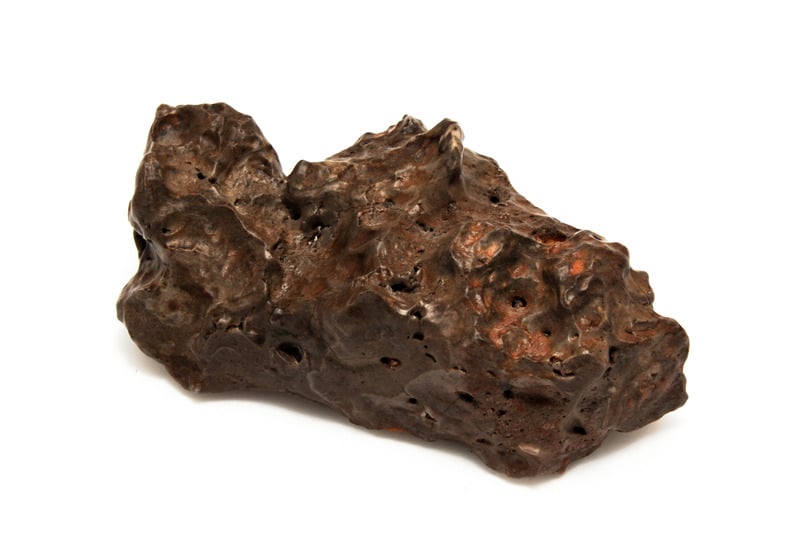
As you might already be aware, a meteorite is a small piece of an asteroid (or other such cosmic objects) that has broken off and managed to land on earth. They are normally almost like a rocky substance, very similar to something you might find on planet Earth – yet they are also almost immediately recognizable as something totally different.
These are beautiful remnants of space rocks, such as meteors and asteroids, that have fallen down to earth and survived the fall. The atmosphere is often strong enough to burn away all traces of a meteorite, but that is not the case with any that make it through the atmosphere and wind up landing on our planet.
If you are ever lucky enough to hold one, then you will soon see why there is such a big uproar about owning something like this. They are normally very easy to tell apart from a rock that has come from the earth. Why? Because they tend to be absolutely loaded with the kind of make-up and composition that you simply do not see in most earthly objects.
These are often magnetized thanks to their unique combination of iron and/or nickel. Some will be mostly (or all) iron, while some will be mostly (or all) nickel. Compare that to what you would find normally on the earth, and you can soon see why these particular objects tend to stand out so much.
Most often, a meteorite will be collected and then reviewed by a geology team or a team of meteorologists. It just depends on the size, the location, how it was found, and various other factors. However, with enough planning and preparation, you could easily head out there and find your own meteorites if you so choose. How, though?
How can I find a meteorite?
So, there are several ways to pop out and find a meteorite in 2020. However, the best and most effective way to do this by far is to head out there with a metal detector. Meteorites and metal detectors are a perfect match in heaven for one another. With the right metal detector (more on that below), you can use this to help you find just about anything that you are looking for.
Hunting for a meteorite with a metal detector is going to be much easier than simply trying to do it by hand. Finding something that has quite literally fallen from space is not easy. You need to keep focused on the news, but you also need to stay perfectly in tune with the latest science on the subject matter itself.
With that being the case, we recommend that you get used to looking into the subject first and foremost. Read into the science of meteorites and what we know about them as a species first and foremost. Knowledge is a powerful thing, but you need to learn to use that knowledge properly if you wish to find meteorites with a metal detector.
You should be looking to try and find local areas where you are that have a history of meteorite falls. A good way to search locally is with the following Boolean search into the Google News function: “meteorite discovery” + “LOCATION”
Naturally, change out LOCATION for your own location, and be sure to include the speech marks. This forces the search engine to look only for items that have those included exactly. Otherwise, a search engine will show up any search that included the three words “˜meteorite’, “˜discovery’, and your location. We don’t want that!
Where can I find meteorites in the USA?

Good question! The sad thing is that there is no “right” or “wrong” answer. Meteorites can be found all across the United States and the wider world. However, for US hunters who are looking for somewhere in particular to look, the most meteorite-friendly states appear to be Texas and Arizona.
Both have a comparatively high number of meteorites falling in every year, so you might find that traveling here would be a good idea if you are on the lookout for a prolific place to start your search for some meteorites.
Telling a meteorite from standard rocks
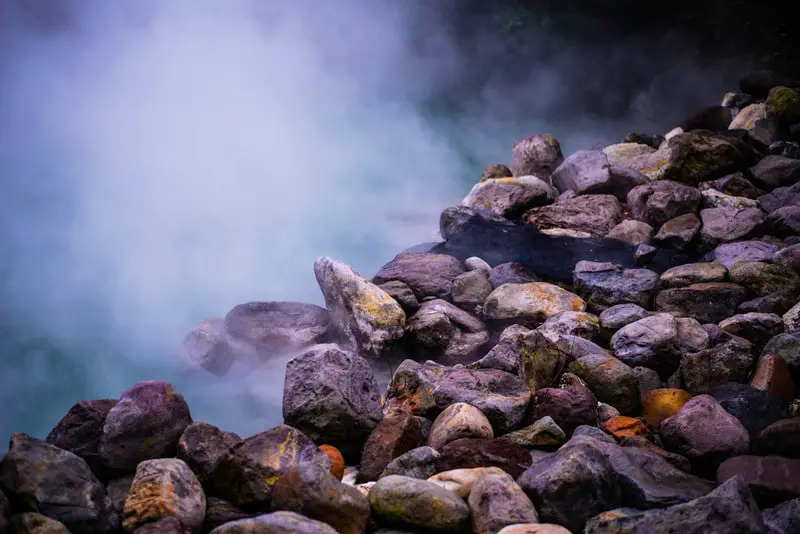
Before we look at what might be a good particular metal detector for you, we think it’s useful to take a look at how to tell a meteorite from a standard rock. This is a harder thing to do than you might first realize. There are five key factors that we believe are the most prevalent deciding factor in finding meteorites with a metal detector.
We recommend that you try and consider the following five factors. This should help you to make a wise choice regarding how to tell a meteorite from a standard earth rock:
- The presence of Chondrules. This is a clear sign that this is a meteorite in most cases. These are small but visible particles that are embedded within the meteorite itself. These are formed at very high temperatures, which shows the process that took place to get here.
- Visible “˜fusion crust’. Fusion crust is going to be noticeable by the fact that the rock should have a dark yet glassy kind of texture to it. This is caused due to melting upon landing and the pressure that was required to burst through the atmosphere in the first place.
- The iron and/or nickel count. Make sure that you have this particular rock checked for a high density of either iron and/or nickel. A high presence of either one of these, or both, is a further sign that this might be a meteorite so be sure to keep that in mind moving forward.
- Magnetism. Another sign that you could be dealing with a rock that is not from this planet is the high level of magnetism. If you were to run a magnet over this particular rock, then it should show some very high levels of magnetism compared to the rocks around it.
- Lastly, be sure to look into the density of the rock. This is not something that you might notice at first, but these rocks tend to have a much higher level of density than most of their competitors out there. Keep that in mind when you are looking at the rocks you have found.
Keep these factors in mind, and you should soon be able to appreciate just how to tell a meteorite apart from a generic rock. By using your metal detector, it should be much easier to tell what is a meteorite and what is not so keep that in mind.
Finding the best metal detector for meteorite hunting
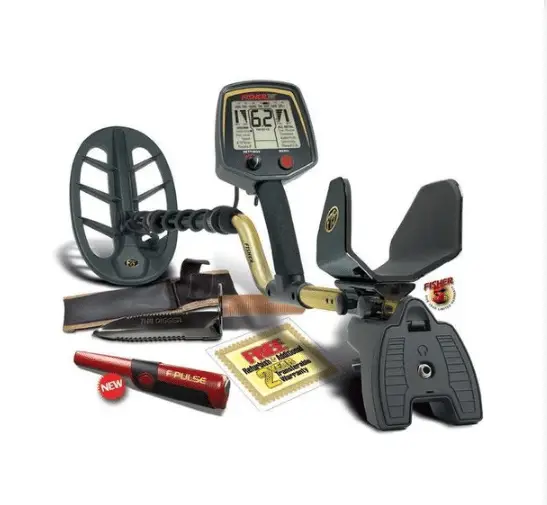
Before you go any further and start actually digging, though, we have some useful ideas for you below. This should help you to find that you buy a quality metal detector made specifically for hunting down meteorites.
If you shop around for any of the above, you should find it easy indeed to pick up and buy a brand new meteorite hunting metal detector.
Tips and tricks for meteorite hunting with a metal detector
With the above in mind, you should be able to understand the very basics of metal detecting. However, now that we know what to look out for when it comes to the hunt, it’s time to make an intelligent call and start moving forward. In a bid to do that, we highly recommend that you take a look at the following details on the ideal tips and tricks for meteorite hunting with a metal detector.
Put these tips to use for a simpler, easier experience.
1. Always start by getting permission
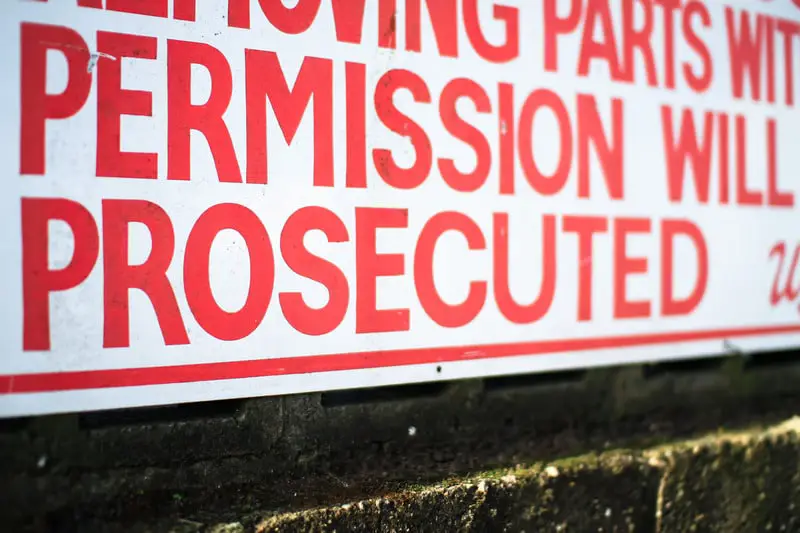
The last thing you want to do is go into a metal detecting spree, only to find out that you lack the legal protection to be in the location you were actually taking part in. So, we recommend that you look to get permission first and foremost.
Anything that is found in a national park, for example, is going to belong to the federal government. So, you should always look to find out not only what you have found, but whether you even have permission to take it. Trying to claim a meteorite without permission is going to land you in legal hot water, so always make sure that you are honest and that you fully declare everything.
However, if you find something on public land in the United States, for example, then the process becomes far more confusing. You will need to talk to someone at the Bureau of Land Management and see what the verdict is. Sadly, if it rules in favor of the government then you are very unlikely to have any kind of means of solving the issue. So, start off by getting permission before you find anything too spectacular, yes?
2. Follow the news
By the same token, make sure that you spend as much time as you can following the news to totally understand the story at hand. The news is a vital ally in making sure that you can keep track of where a meteorite might have fallen. Use things like Google Alerts for your local area, and make sure you set up alerts for any mention of meteorites in the locations that you can go and visit to survey.
We recommend that you do this as it will mean that you can turn up ahead of the chasing pack as opposed to arriving to a team of metal detectors already present. Sure, you might not be first but you should certainly go a long way to making sure that you are not last if you go down this route.
You should try and make sure that you look for large areas where there is plenty of greenery. Why? Because meteorites are often large and dark, meaning they stand out more in a large patch of lush green grass as opposed to in a muddy field!
The drier the location, the greener the location, the more fruitful your discovery.
3. Always bring some magnets
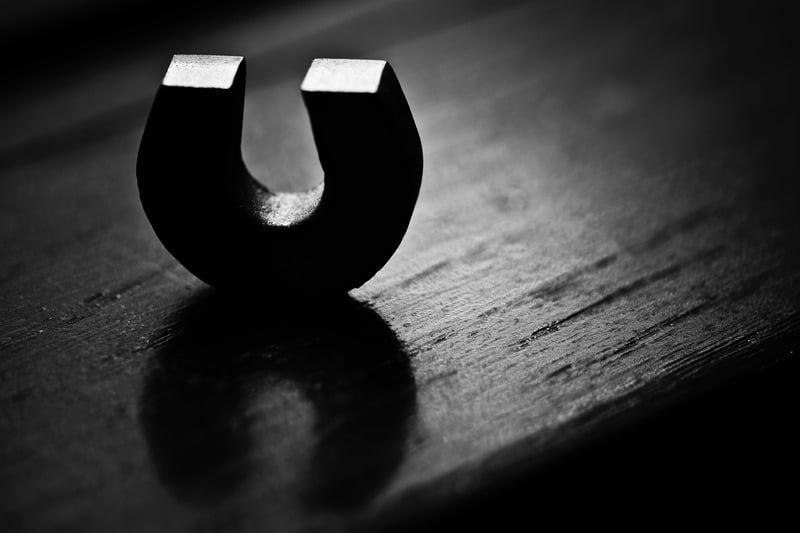
We mentioned magnets up above, but feel it’s vital to mention them again here. Magnets are quite easily one of the most effective tools that you are going to have in your search if we are being honest. Without a magnet, you really are going to find it tougher to locate what you were searching for in the first place.
The vastest majority of magnets which fall to the ground are going to be carrying some kind of iron or nickel as we mentioned before. So, this should mean that your metal detector should be going off. Try and follow the location to where the meteorite landed and then simply follow the increasing hum and vibration of the metal detector. While it might not be the best way to find your discovery outright, it’s a good way of telling if you are getting hotter/colder in your search.
However, not all meteorites are going to contain some kind of metal in them so don’t use this as a fail-free way to find meteorites. A magnet can help you with the majority, but some of the most precious finds are going to be spotted using your eyes.
4. It’s all in the shape
What a lot of people don’t realize is that the shape of a meteorite is as just as important to look for as anything. Make sure you keep this in mind, as many people do not realize just how essential the shape is to make sure you can make an intelligent discovery.
It’s all in the shape, so be sure to keep an eye out for anything with an odd shape or formation. If it fits any of the metrics that we mentioned earlier, then you should have a good idea as to whether or not it’s something unique or simply a weird shape!
Really, the best thing that you can do is have your metal detector keeping an eye out for frequencies whilst your eyes scan anything that looks a touch out of place. The good thing about a meteorite is that it should give you a good sense of accuracy when you are looking for something a bit more unique; they tend to stand out quite significantly from normal rocks.
Add to their extremely dark color and style, and you should soon find the shape really does matter more than most would assume.
5. Always check the interior
One thing to look out for when it comes to finding something of potential cosmic repute is to pay close attention to the interior. If you can see inside the meteorite, then the inside should be a remarkable silver tone. If the interior looks like it has been painted in a metallic silver, then you have probably found something that has been brought to this planet by the forces of the cosmos.
However, the main thing to look out for is the solidity of the rock. If the rock appears to be completely solid and it has no particular signs of pores and/or holes, then you are looking at something very impressive indeed. This is a big reason why we recommend you always look to check the interior of rock first.
If it’s not got a silver interior, then there is a big chance that it is not something from outside of this planet. However, we do recommend not trying to break open a meteorite or grinding one of the corners to see if the interior is indeed silver. This can ruin the value of your find, so simply keep hold of that potential rock for future evaluation.
6. Pay for analysis if you can
One thing that you can do is you can turn to an academic institute and ask them to analyze your finding for you. most of the time, a specialist will do this for you “˜free’ – in exchange, the price tends to be a portion of your material. Keep that in mind, as you should be looking to get the answers that you need from someone who genuinely knows the topic and who can give you trustworthy information.
Most of them will be looking for some kind of gift either in the form of a donation of a few grams of the object or of something else that you can offer them. However, this might be the only way to find out if what you have located or not is actually the product that you had been hoping for. Keep this in mind, and we can show you everything that you need to know about the analysis side of things – you can then make an informed decision.
For the most part, though, you will need expert insight and input to help you make a wise choice about what you have discovered.
7. The smaller the size, the bigger the prize
Strangely, you might find that you tend to get the best value for your time and your effort if you were to find smaller meteorites. Most people assume that you want something larger, but the little finds tend to be as effective – if not more effective – at getting you good returns than some of the larger pieces which are out there today.
Can this be confusing? Of course, it can seem needlessly confusing. However, you should always look to try and find smaller pieces. Setting your metal detector to look for smaller pieces is a better idea as it will still pick up the larger pieces, but it will mean that you can find the little pieces more effectively.
The smaller pieces are often the ones with the most detail and the most interest in what they have locked within. So, take the time to look for something smaller, and you will normally find that your results are far more consistent and rewarding.
Conclusion – How To Find Meteorites With a Metal Detector
Keep all of the above ideas in mind, and you might just find that metal detecting for meteorites can become a much more simplistic and satisfying task than expected. So, where will you begin your search?
If you have any questions or comments please leave them in the comments section below. Thanks for reading and Happy Treasure Hunting!
Great advice but the part encouraging the use of magnets should not be followed. Space rocks can be studied by science through reading a sort of magnetic record they have accumulated over their time travelling through the cosmos that allows scientists to better understand where they came from etc and using a magnet in proximity to a meteorite will in effect erase that information. Think of it as running a magnet over a computer harddrive.
Hi Grant I find your insight plausible. I never considered that a magnet could erase information on meteorites. If you could would you reply to this comment and provide a link to more information. I would like to learn more about this so any additional information would be greatly appreciated.
Thanks,
Cory Haasnoot
I live in the foothills of California. A few years back I actually saw a meteor hit the ground one night. I went back to the location later that month to see if I could find the meteor, but didn’t have a metal detector.
What I did find was this:
•scorched tree tops
•about 100ft closer to impact zone were burnt branches halfway up the trees
•a burnt tree, where I deduced the meteor would have hit, that had been cut down and bucked into rounds – after (I assume) the meteor hit
•charred earth (similar in markings to how a paintball would leave paint marks on the ground if shot from a distance and slight angle)
•When I dug around the charred area, the dirt clods were magnetic, and stuck to my magnet.
My question is this…would the meteor be IN the ground, buried, by chance? Or possibly embedded into the burnt tree trunk? Or do they hit, and then bounce, far from the impact zone?
The area is wooded, with oaks and evergreen trees. It’s a fairly reddish, clay type soil. Very dry and arid area. The burnt, charred marks were on a hilltop that starts going downhill about where the burnt tree was located.
Having no idea how to hunt for meteorites, any information would be greatly appreciated. Thanks!
Hi Melissa,
The meteorite might have disintegrated upon impact or it could have broken into many small pieces. I would do a search with a metal detector around the area where you think the meteorite landed. If the meteorite broke apart upon impact I would use a metal detector and if you get some hits have a pinpointer with you to narrow the target area. Another tip is to make sure your metal detector has an all-search mode setting. Meteorites are made up of many different types of metal and if you discriminate when detecting one metal over another you might miss the meteorite altogether. Hope this helps. Good luck I hope you find that meteorite!
I would love to help you search the area. I have 2 metal detectors, one you can use.
I have had a rock that I think is a meteorite for over 50 years, I am 83 years old and would like to know before I go, The Rock was found on a friend’s ranch in 3rivers California. It is about the size of a football and weighs 37 Lb. I have done all the tests you have talked about and it passes all the tests. What is my next step? I will give part of it to anyone that can verify it.
Hi Harry, that would be an awesome find if what you have is a meteorite. I wouldn’t be able to verify the meteorite but the website http://meteorite-identification.com has some information on places you can contact about getting your meteorite tested and verified.
You could also check out Meteorite ID which is a solution for detecting Nickel that is sometimes found in meteorites. I have never used it so I’m not sure if it works.
I hope this helps you out and I hope you find out if you have a genuine meteorite. If you get your meteorite verified please let us know.
A cpl. of years ago I saw on TV a show where these 2 guys were looking for meteorites with a metal detector that they made a large coil for out of plastic plumbing pipe,about 4 feet in diameter. I know it takes a special detector to handle that type of coil but can’t remember what it was. If anyone knows please send email with the proper info. Thanks
Hi, James, I haven’t seen the show but hopefully, someone can answer your question!
James I’m pretty sure it was a show called meteorite men you can google it and see, the guy off the show actually has a rock shop in Eureka Springs AR. I’ve been there he’s super nice, hope that helps a little..
Found an interesting rock at the base of a dying clump birch tree. Owners before me said it was hit by lightning in 2009 and slowly was decaying. I had it removed and did the stump grind when this magnetic rock spat up. Very brown with fusion crust. Marks brown on unglazed tile. How can I get it verified. I live in niagara falls Canada
Hello Nancy,
The following website has a list of sites that verify meteorites: http://meteorite-identification.com/verification.html One of those might be able to help you out.
I have a Tesoro Mayam detector. Not sure how to set it for Meteors. Has the small disk. I’m new to this so anything will help. Putting a new battery in it it seems to run great. I live in Mohave County AZ. Apparently people say this is a good area. Being My deceased girlfriends detector I wish to honor her with finding meteorites.
Hi Matt,
I don’t have experience with Tesoro but from what I have gathered on the internet you need to keep the search coil at a constant distance from the ground when you are detecting. Try posting your question about the Tesoro Mayan in the metal detecting forum here: CLICK HERE There’s a thread on the forum where they talk a little about the Tesoro Mayan metal detector. Hope that helps. Good luck in finding those meteorites!
I have a Minelab Equinox 800 and was wondering what I am looking for, setting wise, to find the tiny ones.
Hi Susan, try detecting in gold mode 1 or gold mode 2 for small targets. Here’s a link to an article written by Minelab that might explain in more detail.
https://www.minelab.com/community/treasure-talk/nugget-detecting-with-the-minelab-equinox
I wish you luck in finding those elusive meteorites. Thanks for reading and Happy Meteorite Hunting!
Cory
In 1971 I bought a Yukon 77 B metal detector made by Compass. I found a piece of space rock in Arizona. I also found a gold nugget laying on bedrock. I would have walked past it had it not been for my detector.I looked all over the bedrock and never found more gold there. I also have a metal roof on my house and while cleaning my gutters I found quite a bit of black magnetic Material. Three of these particles were Perfectly round. One was half the size of a match head. I found some more of this same material at the bottom of my down spouts.